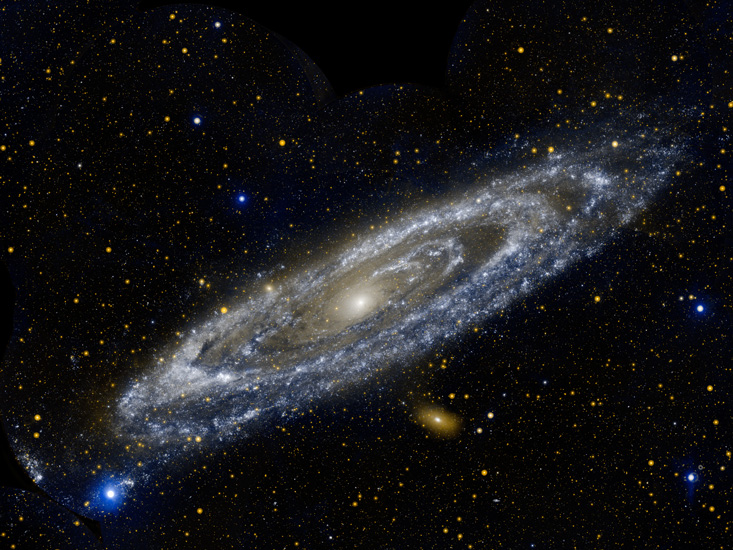The Physicist Challenging the Existence of Dark Matter
Written on
Mordehai Milgrom, a physicist at the Weizmann Institute of Science, describes himself as part of the "MOND community," referencing his theory of Modified Newtonian Dynamics. This theory seeks to amend Newton's laws without invoking dark matter or dark energy, which together are believed to make up a staggering 95.1% of the universe's mass-energy.
During a visit to Milgrom, whose amiable demeanor contrasts with his ambitious claims of correcting Newtonian physics, I learned about his views on science and the cosmos. Milgrom, who is celebrating his 50th year at the Weizmann Institute, shared insights into his unconventional journey and thoughts on dark matter's validity.

What inspired your dedication to the motion of stars?
Milgrom recalls his teenage fascination with physics, which offered a deep understanding of how the universe operates. Unlike a long-term ambition, his love for the subject was immediate and personal. He didn't envision making groundbreaking discoveries but felt a strong connection to the discipline akin to the passion others have for art or sports.
How did you engage with the dark matter dilemma?
During his Ph.D. studies, Milgrom and fellow students were encouraged to explore new fields. This led him to astrophysics, where he initially focused on high-energy phenomena before shifting to galaxy dynamics. He soon encountered a puzzling inconsistency in the speed of stars orbiting galaxies, which did not align with Newtonian predictions.
Milgrom explained the paradox: while Newton's laws held for close orbits, the behavior of stars further out contradicted expectations. This discrepancy grew more pronounced with the advent of radio telescopes revealing cold gas clouds orbiting galaxies at unexpected speeds, presenting a significant scientific challenge.
What prompted your skepticism about dark matter?
Milgrom noted a peculiar regularity in the rotational speeds of stars that suggested a deeper principle might be at play. Rather than attributing these findings to dark matter, he proposed that Newton’s laws might require revision. In 1980, during a sabbatical at Princeton, he began to formulate his thoughts on MOND, hypothesizing that the consistent rotation speeds could indicate a new natural law.
He meticulously analyzed various properties of celestial bodies and eventually identified acceleration as a crucial factor that differentiates the behavior of stars in galaxies from those in solar systems.

What was the reaction from your peers at Princeton?
Milgrom refrained from sharing his theories with colleagues, fearing they would dismiss his ideas as outlandish. He later recognized this hesitation as counterproductive, but by that time, he had developed a clear understanding of MOND.
How has your journey as a scientific outsider been?
Over the past 35 years, Milgrom describes his experience as both challenging and fulfilling, relishing the opportunity to champion a non-mainstream theory. While he faced skepticism, he believes that the slow acceptance of MOND will underscore its significance and complexity.
After discreetly drafting three pivotal papers on MOND during his sabbatical, he faced initial rejection from prestigious journals. Eventually, however, he succeeded in publishing them, with his wife Yvonne being his first audience, providing steadfast support throughout his career.
How does MOND address the larger cosmological questions?
Milgrom's work has led to a growing community of scientists interested in MOND, even as dark matter remains the dominant theory. Despite numerous searches for dark matter failing to confirm its existence, MOND has accurately predicted the dynamics of over 150 spiral galaxies.
He acknowledges that not every galaxy fits MOND's predictions, attributing this to the complexities of measuring celestial masses and distances. Nevertheless, he finds it remarkable that MOND's framework continues to provide valid explanations.
What about MOND's compatibility with relativistic physics?
Milgrom notes that recent developments have produced several relativistic formulations of MOND, dispelling the notion that it is inherently incompatible with Einstein's theories. Although challenges remain, he remains optimistic about MOND's potential to address cosmological mass anomalies.
How does MOND relate to the universe's expansion?
Milgrom points out the shortcomings of dark energy as merely a placeholder for unresolved questions. He believes that MOND presents a more integrated understanding of cosmic structure and dynamics, suggesting a profound connection between galactic behavior and the universe's larger framework.
He envisions that as the scientific community further investigates MOND, it may also yield new insights into the universe's expansion, potentially leading to a cohesive cosmological theory.
What are your thoughts on unified theories of physics?
Milgrom expresses enthusiasm for emerging theories that seek to integrate MOND with quantum mechanics, appreciating the involvement of diverse researchers. He contemplates the possibility of a grand unified theory that encompasses the principles underlying MOND, reflecting on the joy of exploration that defines scientific inquiry.
Oded Carmeli is a science journalist and poet based in Tel Aviv, Israel.